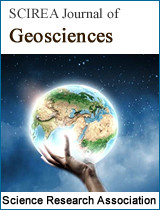ASSESSMENT AND ESTIMATION OF ACTIVITIES IN THE REDUCTION OF CLIMATE CHANGE AND ITS EFFECTS ON PEOPLE AND ENVIRONMENT IN NIGERIA
DOI: 400 Downloads 16117 Views
Author(s)
Abstract
The study assessed and estimated the activities that help in the reduction of climate change and its effect on people and environment in Nigeria. The aim of the study is to assess the amount of CO2 equivalent that would be saved if simple steps were taken to reduce impacts on the planet. Questionnaires were administered to 200 students of University of Ibadan, Nigeria. About 85 per cent questionnaires were recovered. Software developed by USEPA was used to analyze the data. Based on these activities, 1745kg of CO2 equivalent was avoided per year. This is equivalent to the emissions from driving a car 6602.96km. Therefore, if all students in University of Ibadan took these actions, they would save a total of 131,802,909,337kg per year. This is equivalent to the emission from driving a car 498,789,940,025km. This is equivalent to the emissions from 26,293,025 passenger vehicles. This study recommends that some activities should be reduced to save our planet.
Keywords
Climate change, Questionnaires, CO2 equivalent, Emission
Cite this paper
Oshati T, Pelemo O.J, Ofordu C. S, Malizu L, Adamu I.S.,
ASSESSMENT AND ESTIMATION OF ACTIVITIES IN THE REDUCTION OF CLIMATE CHANGE AND ITS EFFECTS ON PEOPLE AND ENVIRONMENT IN NIGERIA
, SCIREA Journal of Geosciences.
Volume 1, Issue 1, October 2016 | PP. 42-49.
References
| [ 1 ] | Forster, P., V. Ramaswamy, P. Artaxo, T. Berntsen, R. Betts, D.W. Fahey, J. Haywood, J. Lean, D.C. Lowe, G. Myhre, J. Nganga, R. Prinn, G. Raga, M. Schulz and R. Van Dorland. 2007. Changes in Atmospheric Constituents and in Radiative Forcing. In: Climate Change 2007: The Physical Science Basis. Contribution of Working Group I to the Fourth Assessment Report of the Intergovernmental Panel on Climate Change [Solomon, S., D. Qin, M. Manning, Z. Chen, M. Marquis, K.B. Averyt, M.Tignor and H.L. Miller (eds.)]. Cambridge University Press, Cambridge, United Kingdom and New York, NY, USA. |
| [ 2 ] | IPCC, 2007: Climate Change 2007: The Physical Science Basis. Contribution of Working Group I to the Fourth Assessment Report of the Intergovernmental Panel on Climate Change [Solomon, S., D. Qin, M. Manning, Z. Chen, M. Marquis, K.B. Averyt, M.Tignor and H.L. Miller (eds.)]. Cambridge University Press, Cambridge, United Kingdom and New York, NY, USA. Note that IPCC uses the following terms to indicate the assessed likelihood, using expert judgement, of an outcome or a result: Virtually certain > 99% probability of occurrence, Extremely likely >95%, Very likely > 90%, and Likely > 66%. |
| [ 3 ] | Keeling, R.F., S.C. Piper, A.F. Bollenbacher and J.S. Walker. 2008. Atmospheric CO2 records from sites in the SIO air sampling network. In Trends: A Compendium of Data on Global Change. Carbon Dioxide Information Analysis Center, Oak Ridge National Laboratory, U.S. Department of Energy, Oak Ridge, Tenn., U.S.A. |
| [ 4 ] | Trudinger, et al (1999): ClimateChangeEducation.org |

